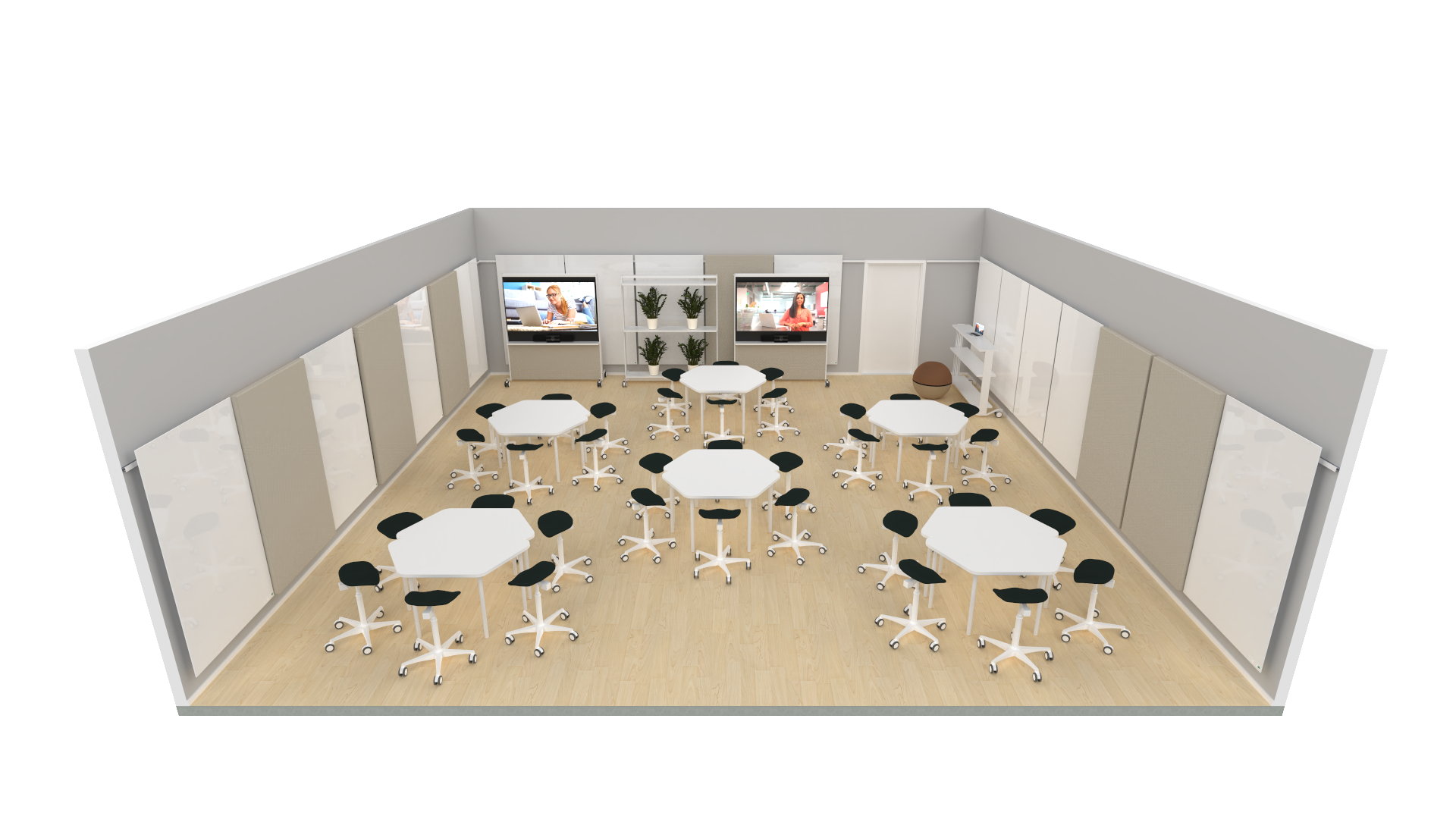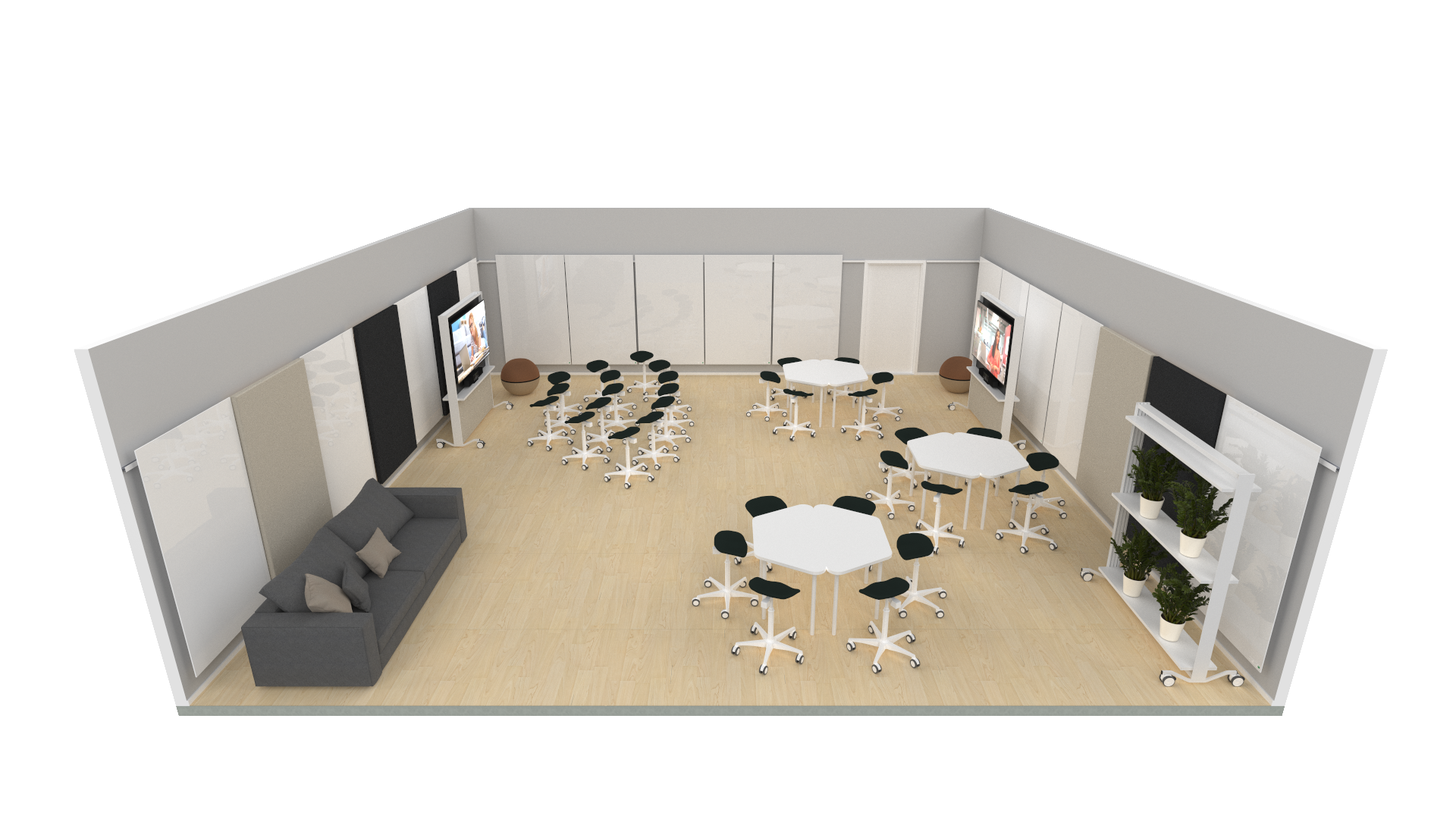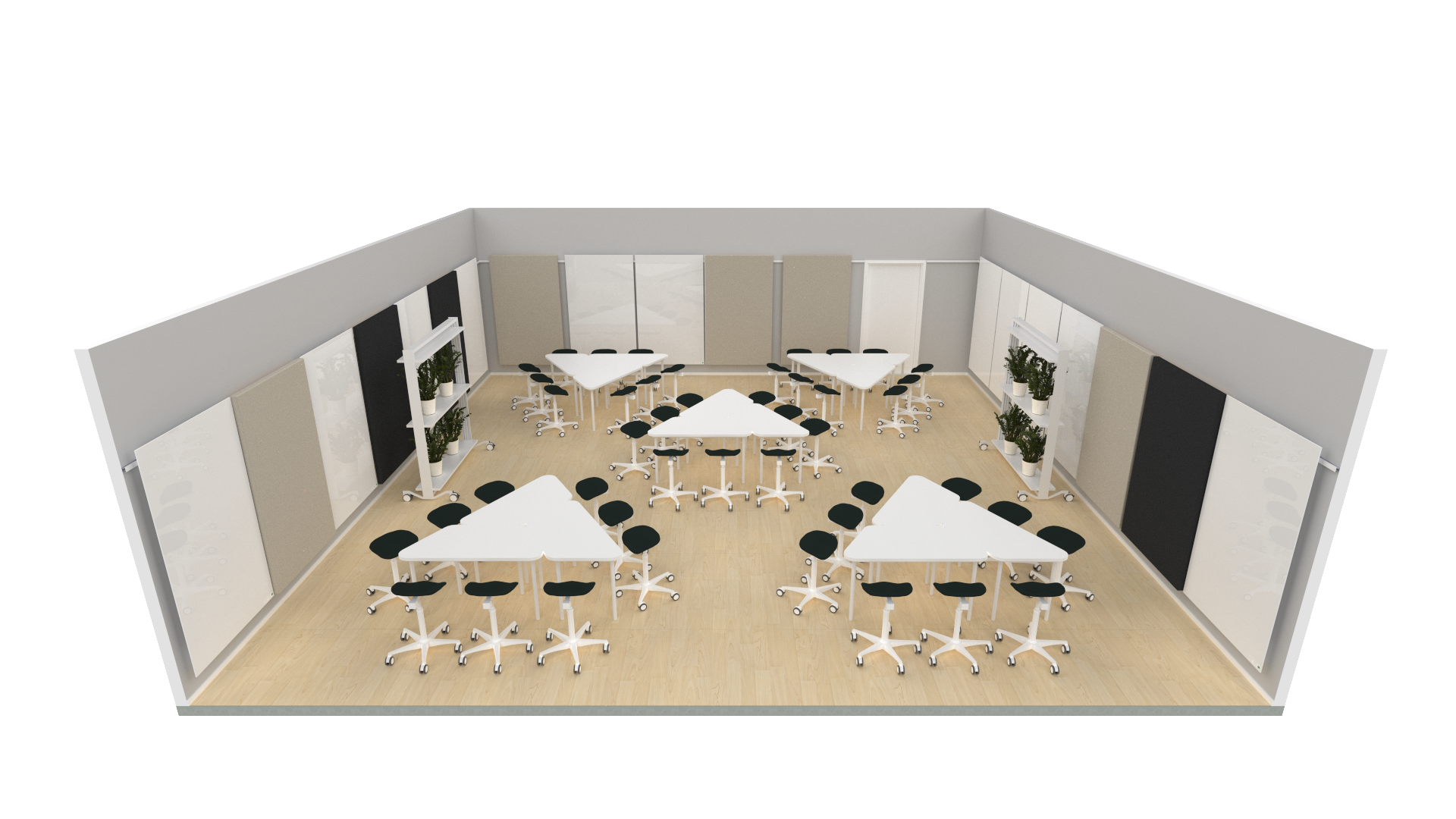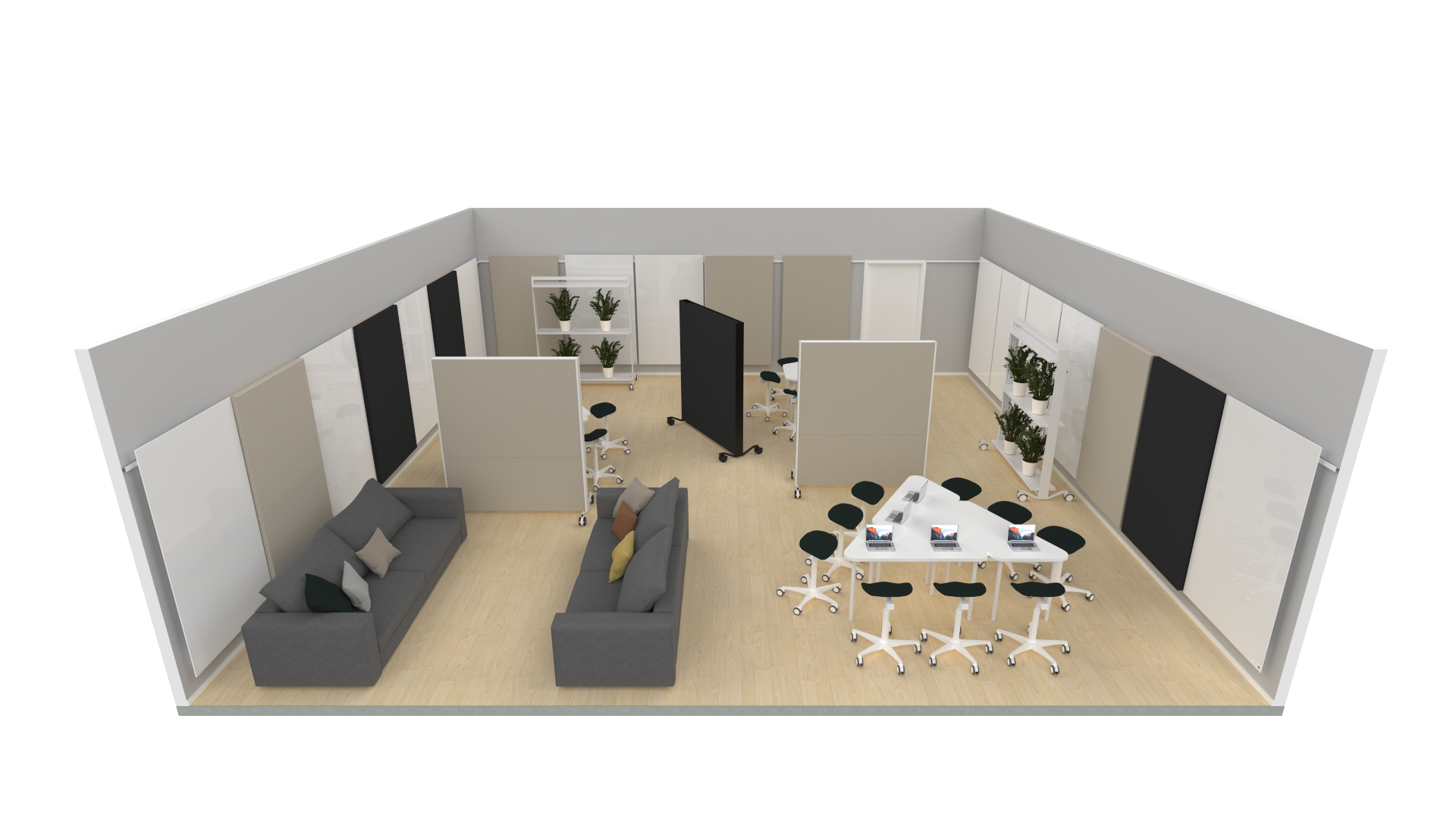To facilitate everyone's future learning, it is essential that we ask ourselves how tomorrow's learning environments should look. This question is of utmost importance not only in the education sector but also in all other areas, considering the rapidly increasing demand for skills development.
Awareness of this challenge is widespread, and intensive efforts to transform the challenge into an opportunity are underway in many contexts. A couple of concrete examples from Sweden include the Royal Institute of Technology, which is driving the active project Future Education, and Akademiska Hus, which is conducting several ongoing research projects resulting in the reports Future Learning Environments - A Research-Based Overview and Future Learning Environments at the University of Borås.
Key Findings from Research Projects
- Flexibility
It is crucial to have the ability to easily adapt and create desired environments to support different learning styles and needs. Flexibility means that environments can be reshaped and adjusted quickly and efficiently to meet the specific requirements of a given pedagogical situation. This creates a dynamic learning environment that can be tailored to both the teacher's and the student's needs, promoting a more engaging and effective learning experience. - Hybrid Meetings
Hybrid meetings have become a permanent and essential part of our work and learning environments. These meetings combine physical and digital elements, enabling communication and collaboration at a distance while considering accessibility aspects. By integrating hybrid meetings into learning environments, we can reach a broader audience and offer flexibility for students and participants who cannot physically attend while ensuring that the meeting is accessible to all. This opens up opportunities for global collaboration and idea exchange, promoting a more inclusive and sustainable learning experience. - Active Learning
Active learning is a key component of future learning environments. It involves actively engaging students and learners in the learning process by enabling various learning methods such as workshops, group work, and presentations. By promoting active participation and interaction, the learning experience becomes more engaging and memorable. Active learning also fosters problem-solving, critical thinking, and collaboration skills, which are crucial skills for today's knowledge-based society. - Adaptability of Environments
Flexibility in learning environments also entails adaptability. It is essential that environments can be adjusted to support the pedagogy currently considered most suitable while ensuring they are accessible to all and that resources are used sustainably. This may include redesigning classrooms, adding technical aids, or adapting materials and resources. By enabling easy adaptation of environments, we can ensure that they are always relevant, inclusive, and sustainable. - Efficient Space Utilization
Another important aspect is the efficient use of spaces. It involves maximizing the use of all available areas and adapting them for various purposes. By designing versatile and flexible environments, we can optimize resource utilization and reduce unnecessary costs while ensuring accessibility for all, regardless of their needs. - Mobile Solutions
Mobile solutions are a key component in creating flexibility and efficiency in learning environments. By using technology and mobile devices, we can create flexible learning opportunities that can be accessed anywhere and anytime. This is particularly important for students and participants who require flexibility in their learning experiences. Mobile solutions also enable collaboration and interaction at a distance, promoting a more adaptable learning environment. - Easy Management
Finally, easy management of tools and technology is of paramount importance. To create a smooth learning environment, equipment must be easy to use and handle. This includes ensuring that all technical aids are available and functioning correctly when needed. Easy management reduces interruptions in the learning process and promotes a more efficient and productive learning experience.
In today's rapidly changing world, everyone is exposed to the demand for skills development and continuous learning. All organizations, regardless of their industry, need to be learning organizations to meet future challenges and remain competitive. If we do not keep up with developments, we risk falling behind, and no one will want us. This applies to all markets and every individual that constitutes their organizations.
Our primary goal is to actively support this. In this endeavor, our role is to adapt and develop equipment that enables the realization of this vision. Already five years ago, we initiated our work to prepare for the future by creating entirely mobile solutions that cover everything from acoustics to the management of hybrid meetings.
With our installation-free concept, we offer opportunities to introduce the active and hybrid pedagogy highlighted by research projects. The images below provide just a taste of how we can transform empty spaces into desired learning environments and take advantage of previously unused areas.
Pleasant, Active, and Creative
 In this flexible learning environment with whiteboards and hanging rails, an active and creative learning experience is enabled. The whiteboards on the rails are easily movable and can be placed where needed. Sound absorbers clad in light fabric create a quiet and pleasant atmosphere. Twelve trapezoidal tables, organized in hexagonal groups for six people each, promote collaboration and interaction. The teacher has access to a Pendax FlexWall Mobile Workspace to lead and engage the students. Green plants add a comfort component to this dynamic learning environment.
In this flexible learning environment with whiteboards and hanging rails, an active and creative learning experience is enabled. The whiteboards on the rails are easily movable and can be placed where needed. Sound absorbers clad in light fabric create a quiet and pleasant atmosphere. Twelve trapezoidal tables, organized in hexagonal groups for six people each, promote collaboration and interaction. The teacher has access to a Pendax FlexWall Mobile Workspace to lead and engage the students. Green plants add a comfort component to this dynamic learning environment.
Lecture and Group Work

The same flexible learning environment as before, now adapted for a combination of lectures and group work. The directionless layout and whiteboards promote interactive learning. Sixteen seats, without tables, are arranged in front of a Pendax FlexWall Mobile Presentation unit, where someone leads a remote lecture. A sofa has been added to offer a quiet and undisturbed workspace for those who want to work alongside the main activities. Here, the opportunity to switch between lectures and collaborative exercises becomes clear.
Creative Collaboration

The same flexible learning environment as before, now adapted for creative collaboration. Two mobile shelves with green plants create an inviting atmosphere. Trapezoidal tables are organized in three triangles with space for nine people at each table. By moving out other mobile units, the room creates an open and adaptable environment for collaborative exercises. Here, students can share ideas and work together in a pleasant and creative atmosphere. No one in the room is more than five steps away from a whiteboard.
Versatile Learning

In this flexible learning environment with versatile table arrangements, a diverse learning experience is facilitated. Two hexagonal and one triangular table formation promotes collaboration and interaction in different groups. Two sofas provide space for relaxed discussion and reflection. Green plants and three Pendax FlexWall Mobile Acoustic professional sound absorbers on wheels help create a pleasant and sound-friendly environment. Here, students can engage in diverse learning activities with a focus on collaboration and engagement.

